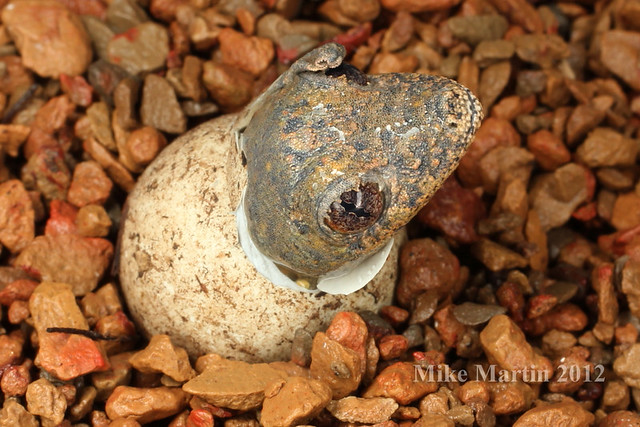miguel camacho!
New member
So, my U. aff henkeli have been pretty productive in the first year. For my latest pair of eggs to hatch, they were laid the morning of Aug 30, 2011. First hatchling was just spotted in the incubator moments ago from this clutch (~7pm, Feb 28, 2012). If you do the calculation, that's a whopping 182 days (5 months, 29 days).
I find it interesting that prior to my hiatus from keeping, my incubation durations were centered around 90 days. Granted I did not keep U. aff henkeli in the past, but I hatched quite a few U. phantasticus and U. henkeli in my former days, and hatched a few clutches of U. ebenaui before the beginning of my hiatus in 2007.
I thought 3 months was the 'normal' incubation time. I know it's difficult for some people to get dips in temps down into the lower 60s, but I have been able to achieve temps around 60F through much of this winter. I also kept my room cooled to around 68-70F during much of the summer, with lows around 65F overnight.
I'm interested to hear from others that are experiencing incubation significantly over 3 months time. I know some individuals don't spot the eggs at the point they're laid, and I don't have any problem with that! I was lucky to notice females laying in most of the clutches I gathered last year. But for those of you that have incubation durations roughly along these lines (4-6 months), what species are you working with? At which temperatures do you keep adults? the eggs? Which incubation medium/method do you use?
Figured I'd also share a useful link to calculate incubation, rather than doing it by hand.
http://www.timeanddate.com/date/durationresult.html?m1=08&d1=30&y1=2011&m2=02&d2=28&y2=2012
And, well, people probably want pics, too. I'm amazed it took me this long, but after hatching out many Uroplatus in the past, this is the first time I was vigilant enough to catch a leaftail hatching as it first began to exit the egg. Turns out, after all, there is not a sudden explosion where the gecko just flies out of the egg. I might be able to get some video up of it as it proceeded to emerge from the egg completely.


I find it interesting that prior to my hiatus from keeping, my incubation durations were centered around 90 days. Granted I did not keep U. aff henkeli in the past, but I hatched quite a few U. phantasticus and U. henkeli in my former days, and hatched a few clutches of U. ebenaui before the beginning of my hiatus in 2007.
I thought 3 months was the 'normal' incubation time. I know it's difficult for some people to get dips in temps down into the lower 60s, but I have been able to achieve temps around 60F through much of this winter. I also kept my room cooled to around 68-70F during much of the summer, with lows around 65F overnight.
I'm interested to hear from others that are experiencing incubation significantly over 3 months time. I know some individuals don't spot the eggs at the point they're laid, and I don't have any problem with that! I was lucky to notice females laying in most of the clutches I gathered last year. But for those of you that have incubation durations roughly along these lines (4-6 months), what species are you working with? At which temperatures do you keep adults? the eggs? Which incubation medium/method do you use?
Figured I'd also share a useful link to calculate incubation, rather than doing it by hand.
http://www.timeanddate.com/date/durationresult.html?m1=08&d1=30&y1=2011&m2=02&d2=28&y2=2012
And, well, people probably want pics, too. I'm amazed it took me this long, but after hatching out many Uroplatus in the past, this is the first time I was vigilant enough to catch a leaftail hatching as it first began to exit the egg. Turns out, after all, there is not a sudden explosion where the gecko just flies out of the egg. I might be able to get some video up of it as it proceeded to emerge from the egg completely.


Last edited:

